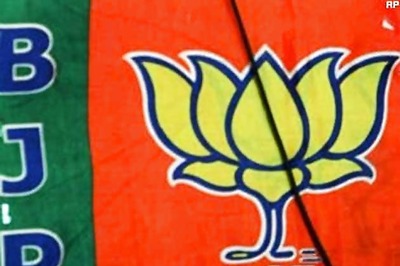
views
RBI MPC Decision: Commencing from August 12, banks will be required to uphold an additional Cash Reserve Ratio (CRR) of 10% on the growth in their Net Demand and Time Liabilities (NDTL) between May 19 and July 28, according to the statement by Governor Shaktikanta Das on August 10 as part of MPC decisions. He added that this incremental CRR move to suck out a little over Rs 1 lakh crore of excess liquidity.
Das added that the prevailing CRR will remain unaffected. The current CRR in India is 4.5%.
Also Read: RBI MPC Decision: Is There Any Impact On Home Loan EMIs? What Borrowers Must Know
Sonam Srivastava, founder and fund manager, Wright Research, said, “The decision to introduce an incremental CRR of 10% is a prudent move to manage the surplus liquidity in the banking system, highlighting RBI’s commitment to ensuring stability. While the unchanged GDP growth forecast paints a confident picture for the economy, the raised CPI inflation forecasts for the coming quarters signify headwinds and the need for watchfulness. The MPC’s stance on ‘withdrawal of accommodation’ aligns with its resolution to steer inflation towards its 4% target, balancing growth with stability.”
Srivastava added that the market is likely to have a mixed reaction to the MPC meeting.
“The banking sector, in particular, might face short-term pressures due to the incremental CRR announcement, as it implies temporary constraints on deployable funds. However, the assurance of adequate liquidity should allay significant concerns,” Srivastava added.
Puneet Pal, head-fixed income, PGIM India Mutual Fund, said, “RBI stays on hold while indicating its discomfort with the level of surplus liquidity as it surprisingly announces an incremental CRR (I-CRR) of 10% on the increase in Bank’s NDTL between May 19, 2023 to July 28, 2023. We expect short term money market curve of up to 3-6 months maturity to be negatively impacted. We expect the curve to stay flat and the 10yr Benchmark Bond to trade in a range of 7.05% to 7.25% over the next couple of months.”
CRR stands for Cash Reserve Ratio. It is a fraction of a bank’s total deposits that it has to keep with the RBI in cash. The RBI mandates the CRR for scheduled commercial banks in India.
The CRR is one of the tools that the RBI uses to control the money supply in the economy. When the CRR is raised, banks have less money to lend, which reduces the money supply and helps to control inflation. When the CRR is lowered, banks have more money to lend, which increases the money supply and can help to stimulate economic growth.
The CRR also serves as a safety net for the banking system. By requiring banks to hold a certain amount of cash reserves, the RBI ensures that banks have enough liquidity to meet their obligations to depositors.



















Comments
0 comment